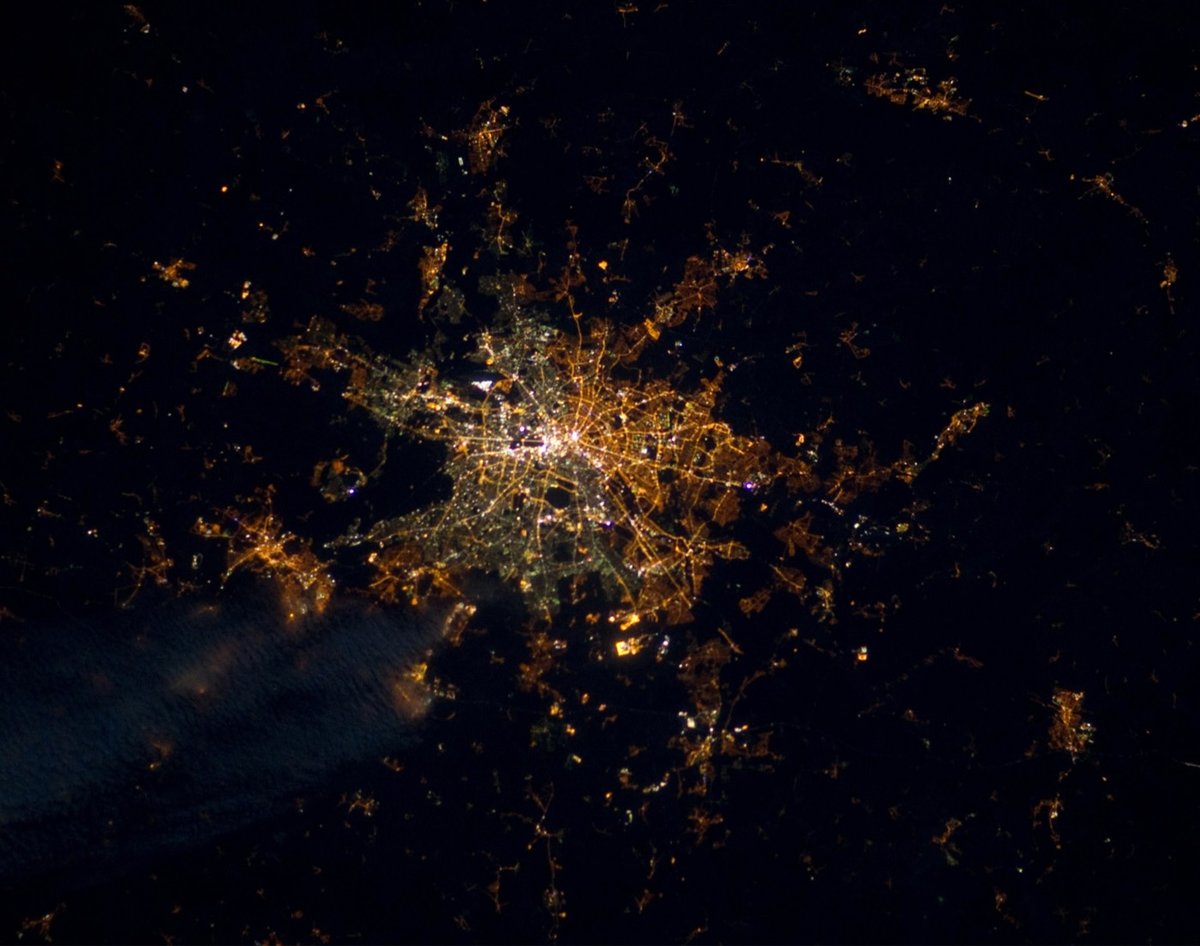The Berlin Wall of Light

This photo of Berlin, Germany at night was taken in 2012 from the International Space Station. Almost 25 years after the fall of the Berlin Wall, you can still see the division from space because of the colors of the different street lights used in the East and West.
Daniela Augenstine, of the city’s street furniture department, says: “In the eastern part there are sodium-vapour lamps with a yellower colour. And in the western parts there are fluorescent lamps — mercury arc lamps and gas lamps — which all produce a whiter colour.” The western Federal Republic of Germany long favoured non-sodium lamps on the grounds of cost, maintenance and carbon emissions, she says.
A night photo of Berlin from 2016 confirms that street light replacement is happening in the city, albeit slowly.
See also a photo of NYC from 2015 taken from the ISS, which shows the replacement of the city’s sodium vapor street lights with blue-glowing LEDs.
The new LEDs may be environmentally sensitive, but they are also optically harsh.
“The old lights made everybody look bad,” said Christopher Stoddard, an architect, who lives at the corner of Fuller Place. “But these are so cold and blue, it’s like ‘Night of the Living Dead’ out there.”
“We’re all for saving energy,” his wife, Aida Stoddard, also an architect, said, “but the city can do so much better.”
A few blocks away, Rose Gallitelli taped up black garbage bags on her bedroom windows so that she could sleep. “They’re the heavy-duty kind,” she said.





Stay Connected